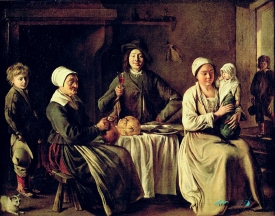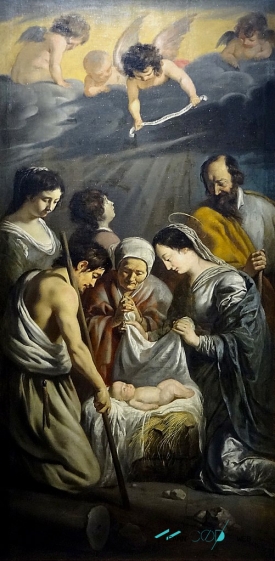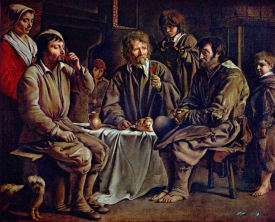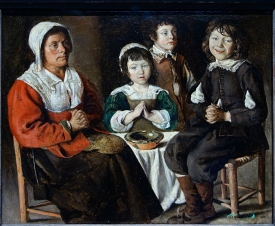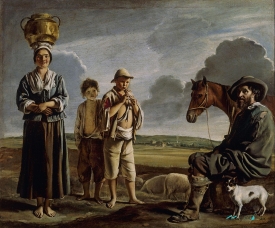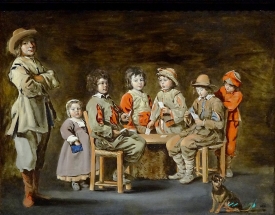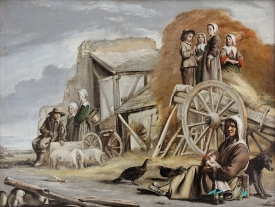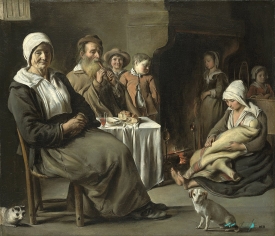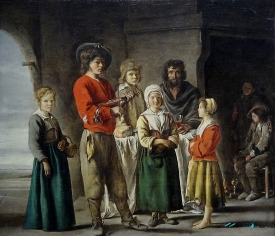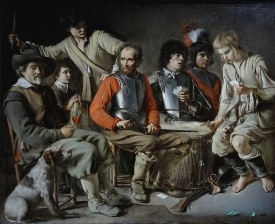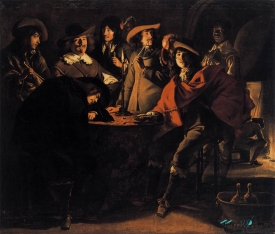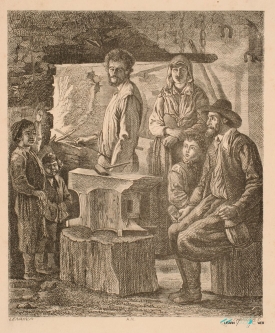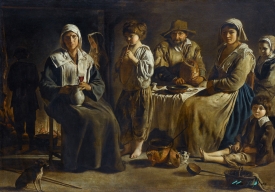The brothers Antoine, Louis, and Mathieu Le Nain remain some of the most intriguing and mysterious figures in art history. Active in 17th-century France, they are renowned for their moving and realistic portrayals of peasant life. Their collective work captures the dignity and humanity of common people with unparalleled depth and empathy. Yet much about their lives and individual contributions remains shrouded in mystery, fueling ongoing fascination and academic debate.
One of the most enduring mysteries is the attribution of their works. Many of their paintings are unsigned, and those that are bear only the collective signature "Le Nain fecit" ("Le Nain made this"), without specifying which brother was responsible. This practice has made it difficult for art historians to distinguish their individual styles and contributions.
- "Peasant Family in an Interior": This masterpiece portrays a peasant family gathered in their modest home. The painting is notable for its empathetic representation of the subjects, highlighting their dignity and the silent strength of their familial bonds. The use of muted colors and subtle lighting creates an intimate atmosphere that draws the viewer into their world.
Other notable paintings include:
- "Peasant Meal": A depiction of peasants sharing a humble meal, emphasizing themes of community and shared hardships.
- "The Forge": Illustrating blacksmiths at work, this painting showcases the nobility of labor and the artisans' skill.
- "The Guardroom": A scene presenting soldiers at rest, reflecting on the human aspects of military life.
Their paintings are characterized by:
- Realism and Attention to Detail: The brothers portrayed their subjects with an honest realism uncommon for their time, focusing on the genuine appearance and emotions of ordinary people.
- Emotional Depth: Their works convey deep empathy for their subjects, capturing moments of introspection and the subtleties of daily life.
- Mastery of Light and Composition: They skillfully employed light and shadow to enhance the ambiance and draw attention to key elements within their paintings.
Tragically, Antoine and Louis died in 1648, shortly after their admission to the Academy, possibly due to an epidemic. Mathieu, the youngest, continued working and achieved considerable success until his death in 1677. He was appointed "Ordinary Painter of the City of Paris" and was honored in 1662, adopting the title "Sieur de Jumelle."
It wasn't until the 19th century that their paintings were rediscovered and reevaluated. Critics and art historians like Champfleury played a pivotal role in bringing their work back to prominence. The Realist movement, with artists such as Gustave Courbet and Jean-François Millet, found inspiration in the Le Nains' honest depiction of common people.
Exhibitions and scholarly research rekindled interest in their art, and efforts were made to attribute the works more accurately. Modern technological advancements, including infrared reflectography and pigment analysis, have provided new insights, but the mystery of their individual contributions largely remains.
The Mystery Surrounding the Le Nain Brothers
Born in Laon, France, between 1593 and 1607, the exact birth dates and early life details of the Le Nain brothers are uncertain due to the loss of parish records. Sons of Isaac Le Nain, a royal sergeant, and Jehanne Prévost, they grew up in a region deeply connected to rural traditions. Their artistic training is not well documented, but it is believed they may have studied under a foreign painter, possibly Flemish, given the stylistic affinity with Flemish art of the time.One of the most enduring mysteries is the attribution of their works. Many of their paintings are unsigned, and those that are bear only the collective signature "Le Nain fecit" ("Le Nain made this"), without specifying which brother was responsible. This practice has made it difficult for art historians to distinguish their individual styles and contributions.
Their Masterpieces
The Le Nain brothers are best known for their genre paintings depicting scenes of peasant life with profound realism and emotional resonance. Among their most celebrated works is:- "Peasant Family in an Interior": This masterpiece portrays a peasant family gathered in their modest home. The painting is notable for its empathetic representation of the subjects, highlighting their dignity and the silent strength of their familial bonds. The use of muted colors and subtle lighting creates an intimate atmosphere that draws the viewer into their world.
Other notable paintings include:
- "Peasant Meal": A depiction of peasants sharing a humble meal, emphasizing themes of community and shared hardships.
- "The Forge": Illustrating blacksmiths at work, this painting showcases the nobility of labor and the artisans' skill.
- "The Guardroom": A scene presenting soldiers at rest, reflecting on the human aspects of military life.
Their paintings are characterized by:
- Realism and Attention to Detail: The brothers portrayed their subjects with an honest realism uncommon for their time, focusing on the genuine appearance and emotions of ordinary people.
- Emotional Depth: Their works convey deep empathy for their subjects, capturing moments of introspection and the subtleties of daily life.
- Mastery of Light and Composition: They skillfully employed light and shadow to enhance the ambiance and draw attention to key elements within their paintings.
What Happened to Them?
In 1630, the Le Nain brothers moved to Paris and established a workshop together. Their collaborative approach to painting further complicates the attribution of individual works. They gained recognition for their unique style and were admitted to the newly founded Royal Academy of Painting and Sculpture in 1648, a significant honor acknowledging their contributions to French art.Tragically, Antoine and Louis died in 1648, shortly after their admission to the Academy, possibly due to an epidemic. Mathieu, the youngest, continued working and achieved considerable success until his death in 1677. He was appointed "Ordinary Painter of the City of Paris" and was honored in 1662, adopting the title "Sieur de Jumelle."
The Rediscovery of the Le Nain Brothers
After their deaths, the brothers' works fell into relative obscurity. The rise of classicism and the preferences of the French Academy shifted focus toward idealized representations of historical and mythological subjects, overshadowing the Le Nains' realistic portrayals of peasant life.It wasn't until the 19th century that their paintings were rediscovered and reevaluated. Critics and art historians like Champfleury played a pivotal role in bringing their work back to prominence. The Realist movement, with artists such as Gustave Courbet and Jean-François Millet, found inspiration in the Le Nains' honest depiction of common people.
Exhibitions and scholarly research rekindled interest in their art, and efforts were made to attribute the works more accurately. Modern technological advancements, including infrared reflectography and pigment analysis, have provided new insights, but the mystery of their individual contributions largely remains.



